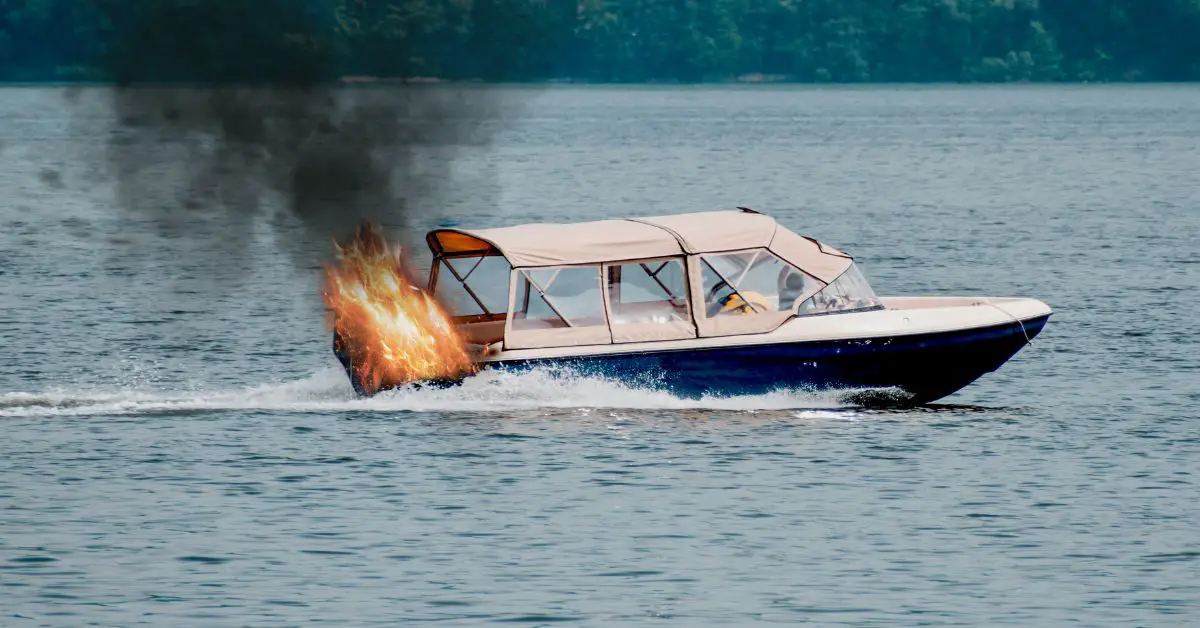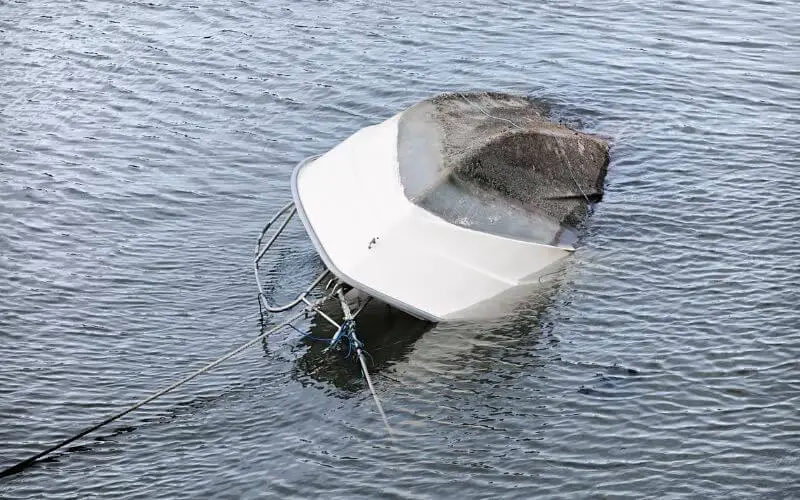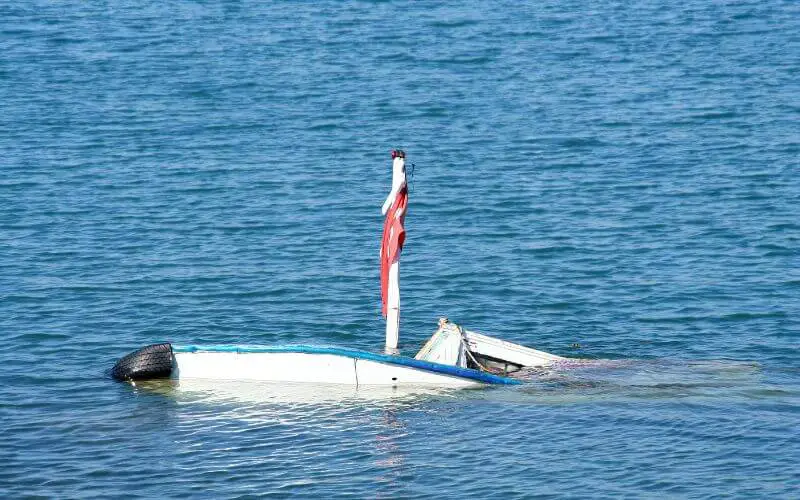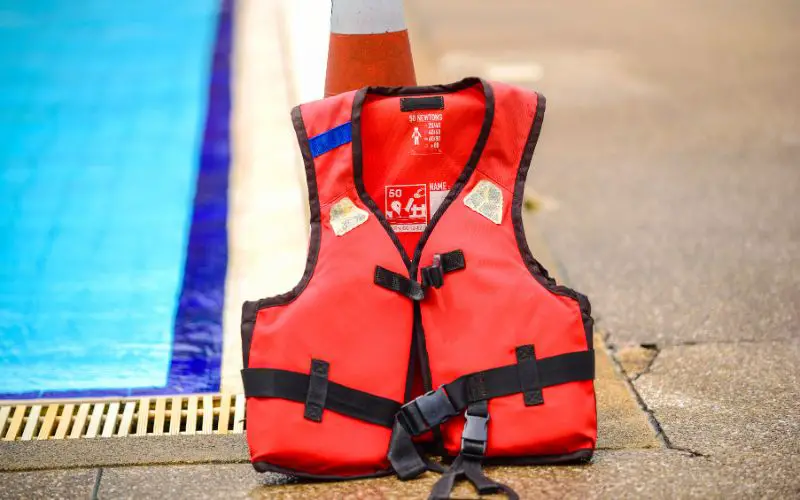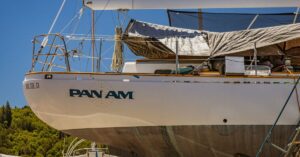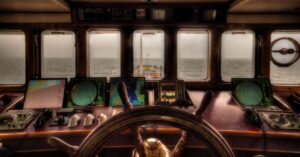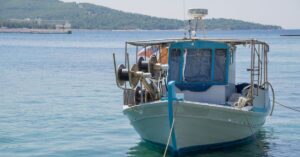Boating fatalities are tragic events that occur when someone loses their life due to a boating accident. These accidents can happen on various bodies of water, such as lakes, rivers, and oceans, and involve different types of water vessels, including boats, jet skis, and sailboats.
Understanding the leading causes of boating accidents resulting in death is crucial to promote boating safety and prevent these tragic fatal accidents from occurring. This article will explore the causes of fatal boating accidents, providing valuable insights for boaters, boat operators, and anyone interested in recreational activities on the water.
Main Cause of Fatal Boating Accidents & Boating Fatalities
While the specific types of accidents may vary, some common examples of fatal recreational boating accidents include:
Capsizing / Man Overboard
This is one of the most common causes of boating deaths. When a boat overturns or a person falls overboard, they may face difficulties staying afloat or getting back on the boat, leading to potential drowning or hypothermia.
Several things can cause a boat to capsize, such as strong waves, powerful winds, or collisions with another boat or objects.
Collision
This type of boating accident occurs any time a boat crashes into a fixed object, either above or below the water’s surface. Boats colliding with each other or with stationary objects, such as rocks or piers, can cause serious injuries or fatalities due to the impact or subsequent sinking of the vessels.
Fire
Fires on board a boat can spread rapidly and pose life-threatening situations, mainly if the fire occurs in confined spaces or if there is a lack of proper firefighting equipment or knowledge.
Sinking / Flooding
Boats sinking or flooding can occur when water enters the vessel through hull damage or equipment leaks. Vessels face hazardous water conditions, including strong currents, rough waves, and storms, possibly leading to structural damage. Also, malfunctioning equipment, like bilge pumps intended for water removal, could contribute to flooding.
Extreme weather conditions might cause a boat to capsize or be swamped by large waves, rapidly filling it with water and posing survival difficulties for the occupants.
Carbon Monoxide Poisoning
Boats with enclosed cabins or areas with fuel-burning appliances or engines can lead to carbon monoxide poisoning. If inhaled, this colorless, odorless gas can quickly build up and cause fatalities.
Drowning / Not Wearing a Life Jacket
Many boating fatalities occur because individuals do not wear a life jacket or do not have access to one. When a person unexpectedly falls into the water, or the boat capsizes, wearing a properly fitted life jacket greatly increases the chances of survival.
Propeller Strikes
Propeller strikes occur when a person is struck by a boat’s propeller while in the water. This type of accident can cause severe injuries or fatalities. Boaters must exercise caution and ensure the engine is turned off or in neutral before allowing people to enter or exit the water near the boat.
Electrical Hazards
Faulty electrical systems or improper boat wiring can lead to electrical hazards, including electric shocks or fires. These accidents can result in severe injuries or even death.
Operator Inattention
Operator inattention is one of the leading causes of accidents involving personal watercraft, often resulting in severe injuries or fatalities. This can be due to intoxication, distractions, or simply not paying close enough attention to their surroundings or the operation of the craft.
The use of excessive speed, especially in areas with heavy traffic or restricted visibility, significantly increases the risk of collisions. It also reduces the time available for operators to react to sudden changes or emergencies.
Despite regulations and guidelines set to maintain safety, some operators unsafely operate their personal watercraft. This could be under the influence of alcohol or drugs, or not following set speed limits, which is highly risky and unsafe.
Preventing Boating Fatalities | How Can I Reduce the Risk of a Fatal Boating Accidents?
To prevent boating accidents that can lead to death, here are some key safety measures to consider:
1. Wear a life jacket: Always wear a properly fitted and U.S. Coast Guard-approved life jacket while on a boat. Ensure everyone on board can access a life jacket suitable for their size and weight.
2. Follow boating safety rules and regulations: Be familiar with your area’s boating laws and regulations. Observe speed limits and navigation rules, and always maintain a proper lookout.
3. Avoid alcohol use and drugs: Operating a boat under the influence of drugs or alcohol can impair judgment, coordination, and response time. The United States Coast Guard has determined that alcohol was one factor more prevalent than all the others in fatalities. Avoid consuming these substances while boating.
4. Maintain a proper lookout: Be aware of your surroundings and watch for other boats, objects, or hazards in the water. Be cautious in areas with heavy boat traffic or poor visibility.
5. Practice safe boating behavior: Avoid reckless behaviors such as speeding, operating a boat beyond its capacity, or engaging in dangerous maneuvers. Respect the water and other boaters.
6. Take boater education courses: Improve your boating knowledge and skills by taking boater education courses. These courses cover important safety information and can make you a more confident and responsible boater.
7. Ensure proper boat maintenance: Regularly inspect and maintain your boat to ensure it is in good working condition. Ensure that all safety equipment, such as fire extinguishers and navigational lights, function properly.
8. Be prepared for emergencies: Have a well-equipped safety kit, including a first aid kit, flares, a whistle, and a waterproof flashlight. Familiarize yourself with emergency procedures and know how to react in an emergency.
By following these safety measures and staying vigilant while boating, you can minimize the risk of accidents leading to death and enjoy a safe boating experience.
Proper Use of Life Jackets and Other Safety Equipment
Boating can be an exhilarating and enjoyable recreational activity, offering a chance to connect with nature and create lasting memories with loved ones. However, it is crucial to prioritize safety on the water to prevent serious injuries and boating fatalities and save lives. One primary safety measure that should always be considered is life jackets.
U.S. Coast Guard statistics have shown that 85% of drowning victims in fatal boating accidents were not wearing life jackets. These figures underscore the importance of wearing these lifesaving devices for boat operators and passengers.
Life jackets are designed to provide buoyancy in the water, keeping the wearer afloat even if they cannot swim. They are essential for reducing the risk of drowning, particularly in emergencies. Everyone aboard a water vessel, including boat operators and passengers, should wear a life jacket.
To use life jackets effectively, ensure they are the correct size and fit snugly. Buckle all straps and make sure they are fastened securely. Additionally, inspecting your life jackets regularly for signs of wear or damage and replacing them as necessary is advisable.
Aside from life jackets, other safety equipment, such as throwable flotation devices, fire extinguishers, navigation lights, and distress signals, are equally important. Please familiarize yourself with the proper use of these items and ensure they are easily accessible in emergencies.
Conclusion
Boating offers thrilling encounters and lasting memories, but it’s vital to prioritize safety on the water. In this article, we dissected different types of boating accidents that lead to boating fatalities. And also uncovered crucial guidelines to minimize risks and ensure safe practices.
To summarize, our key takeaways are:
- Education and Certification: Use proper training and acquire the necessary licenses for safer boating.
- Well-equipped Vessel: Equip your boat with life jackets, fire extinguishers, and emergency signaling devices.
- Maintenance and Inspections: Conduct regular check-ups to identify and fix hazards.
- Awareness: Stay vigilant to weather conditions, water currents, and potential obstacles.
- No Impairments: Never operate a boat under the influence of alcohol or drugs.
- Communication: Keep someone informed about your plans and expected return time, ensuring prompt rescue efforts in emergencies.
We can significantly reduce tragic boating accidents by embracing these precautions and staying informed. Let’s always make safety our top priority as we relish the thrill and beauty of boating.
References:

